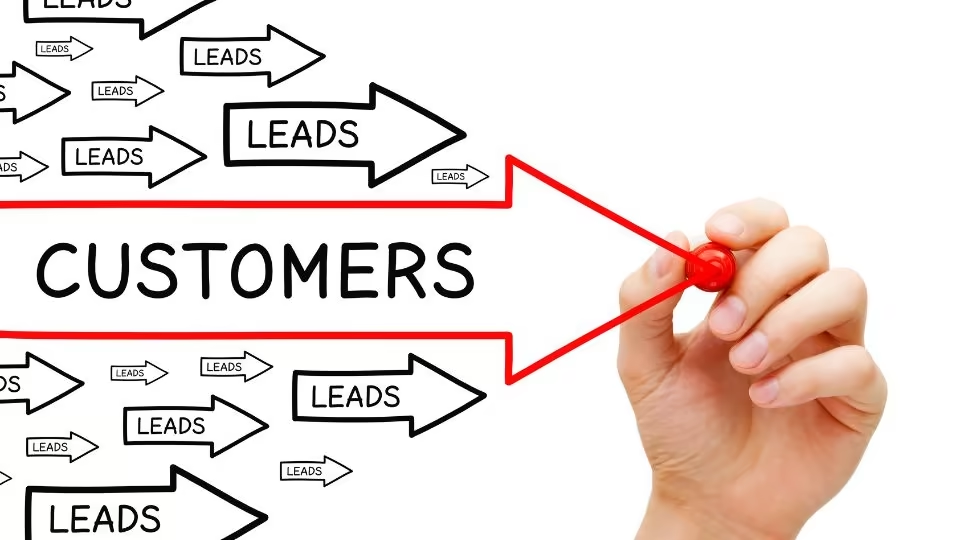A well-built sales funnel is the backbone of any successful startup. It’s not just about attracting traffic—it’s about guiding that traffic through a structured journey from first interaction to final purchase.
Too many startups focus on getting attention but lack the systems needed to convert interest into revenue. The result? Leads go cold, conversions stall, and growth plateaus.
This guide breaks down exactly how to build a sales funnel that not only captures leads but turns them into paying customers—step by step.
Step 1: Understand Your Ideal Customer
Before you create any funnel, you need to define who you’re building it for. You can’t guide people toward a solution if you don’t fully understand their problem. Kartik Ahuja, a B2B Branding & UI/UX strategist who’s helped over 50 startups increase MQL-to-SQL conversions, advises: “Start with deep customer empathy. When you speak their language, every stage of the funnel becomes more effective—because it feels personalized, not pushy.”
Key Actions:
Create a detailed customer persona: job title, industry, pain points, goals.
Talk to early users or prospects to validate assumptions.
Use surveys, interviews, or data from platforms like Google Analytics or LinkedIn.
The more specific you are, the easier it becomes to build targeted messaging that resonates from the first touchpoint.
Step 2: Create a High-Intent Lead Magnet
Once you know who you're targeting, the next step is to earn their contact info with something valuable. This is where a lead magnet comes in—a free, relevant resource that solves a small, immediate problem.
Examples of Effective Lead Magnets:
A downloadable guide or checklist
A short video series or mini-course
An ROI calculator or assessment tool
A free trial or freemium product tier
Make sure the lead magnet aligns directly with the product or service you sell. It should naturally lead users further down the funnel.
Step 3: Build a Simple, Focused Landing Page
Your landing page should do one thing: convert visitors into leads. No extra links, no distractions.
Key Elements:
A clear headline that addresses a pain point
Subhead explaining the specific benefit of your offer
One strong call to action (e.g., “Download Now,” “Start Free Trial”)
A form that collects minimal but useful information (name, email, maybe company)
If you can’t explain the value of your offer in 10 seconds, you’ll lose people.
Step 4: Qualify and Segment Your Leads
Not all leads are created equal. Some will be ready to buy next week, while others are just exploring. Think of your funnel like Snapchat planets—a fun way Snapchat users rank their closest friends based on interaction levels. In your funnel, this concept is mirrored by lead scoring: the more engaged the prospect, the closer they orbit your brand. By segmenting leads based on behavior and interest, you can focus your efforts where they’ll have the most impact.
Use smart forms or automation tools to:
Capture lead data like company size, role, and buying timeline
Assign lead scores based on behavior (e.g., email opens, link clicks, demo requests)
Segment leads into categories: cold, warm, and sales-ready
This step allows you to tailor your communication and focus your energy on leads most likely to convert.
Step 5: Nurture Leads With Email Sequences
A strong email sequence educates, builds trust, and moves leads toward action. It’s your chance to demonstrate value before you pitch. Consider using a Unified communication platform to centralize your outreach—email, chat, and follow-ups—all in one place. This ensures no lead falls through the cracks and every touchpoint feels seamless and coordinated.
Jordan Blake, Lead Content Strategist and Digital Access Expert at Paywall Bypass known for scaling email strategies at SaaS leaders like Drift and Webflow, emphasizes the importance of relevance in timing: “The best nurture flows feel like a conversation—not a campaign. Timed right, even a simple two-line email can drive serious intent.” His approach focuses on context over automation, guiding startups to craft emails that feel personal, not programmed.
Stéphanie Tautou, Founder and Chief Creative Officer at Ottawa Street, emphasizes emotional connection: “Effective lead nurturing isn’t about bombarding people with information—it’s about delivering the right message at the right moment in the right tone. People buy from people they trust.” Her human-first strategies have helped dozens of early-stage startups double their email engagement rates. Whether it’s crafting an email that feels as personal as a monthsary caption or knowing exactly when to send it, emotional intelligence and timing make all the difference.”
Structure Your Sequence:
Welcome email + value overview
Educational content (blog, guide, case study)
Product benefits tied to their pain points
Social proof (testimonials, success stories)
Soft pitch or invitation to book a demo
Use a mix of formats—videos, short emails, infographics—and keep the focus on the lead, not your product.
Step 6: Offer a Clear Conversion Point
After building trust, you need a frictionless way to convert warm leads into customers.
Common Conversion Tools:
Product demos or discovery calls
Limited-time offers or bonuses
Free trials with a defined value outcome
Low-cost entry offers to reduce commitment
Make the next step obvious and low-risk. Remove any unnecessary steps between decision and action.
Step 7: Measure, Optimize, and Improve
No funnel works perfectly out of the gate. The best startups continuously test and optimize their sales process. As you review your data, small shifts can make a big difference. For instance, increasing your landing page conversion rate from a fraction to percent view—say from 0.03 to 3%—can completely transform your pipeline performance. These micro-metrics are key to uncovering scalable growth opportunities.
Adrian Lee, Data Visualization Specialist and Statistical Analyst at Violin Plot who’s helped optimize funnels for high-growth companies across fintech and SaaS, puts it simply: “If you’re not measuring drop-offs and micro-conversions, you’re leaving revenue on the table. Every step of your funnel should tell a story—and if it’s not converting, it’s telling the wrong one.” His data-first approach helps startups understand not just where leads drop off, but why.
Track:
Landing page conversion rates
Email open and click-through rates
Time from lead capture to conversion
Drop-off points in the funnel
Run A/B tests on subject lines, CTAs, page layouts, and offer formats. Use the data to refine every stage of the journey.
Step 8: Align Sales and Marketing From Day One
For early-stage startups, it’s easy for sales and marketing to operate in silos. But a high-performing funnel depends on tight alignment between the two.
Ensure:
Shared definitions of qualified leads
Regular feedback between sales and marketing teams
Consistent messaging from first email to sales call
A handoff process that doesn’t lose momentum
Even if your “team” is just one or two people, build these systems early. They scale with you.
Conclusion
A startup sales funnel isn’t just a bunch of pages and emails—it’s a system that connects curiosity to conversion. When done right, it works in the background, bringing you leads, nurturing relationships, and turning interest into revenue.
To recap:
Know your audience and build everything around their needs
Create an offer that leads naturally into your product
Guide leads through a structured, low-friction journey
Qualify and prioritize intelligently
Optimize constantly based on real data
Startups that build strategic, conversion-focused funnels grow faster—and with fewer wasted opportunities.



